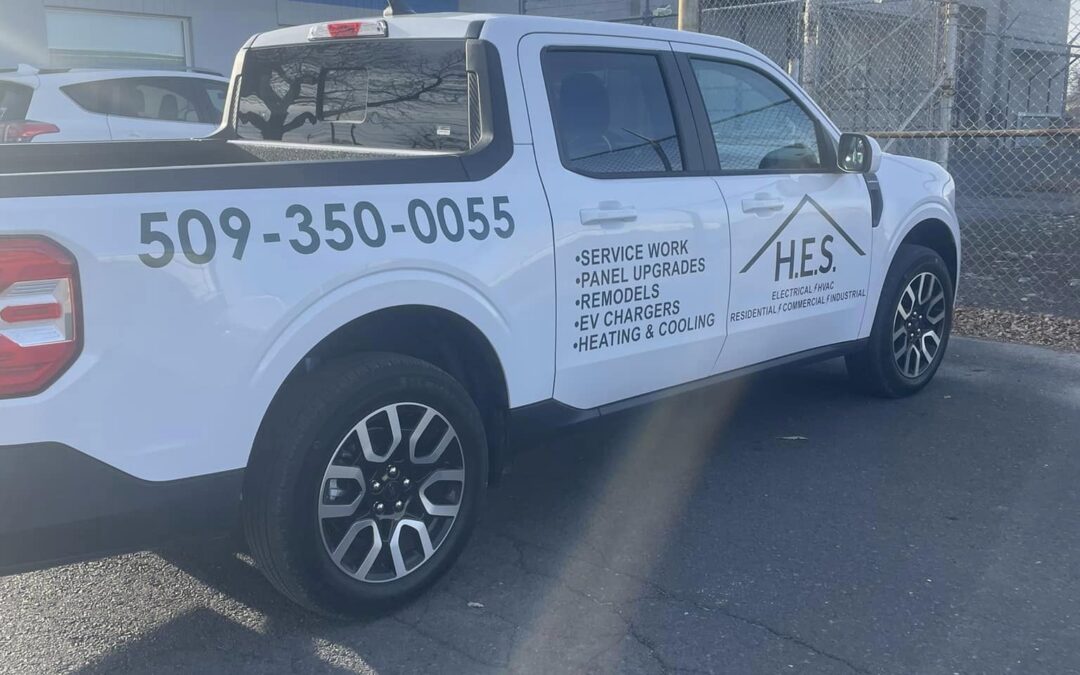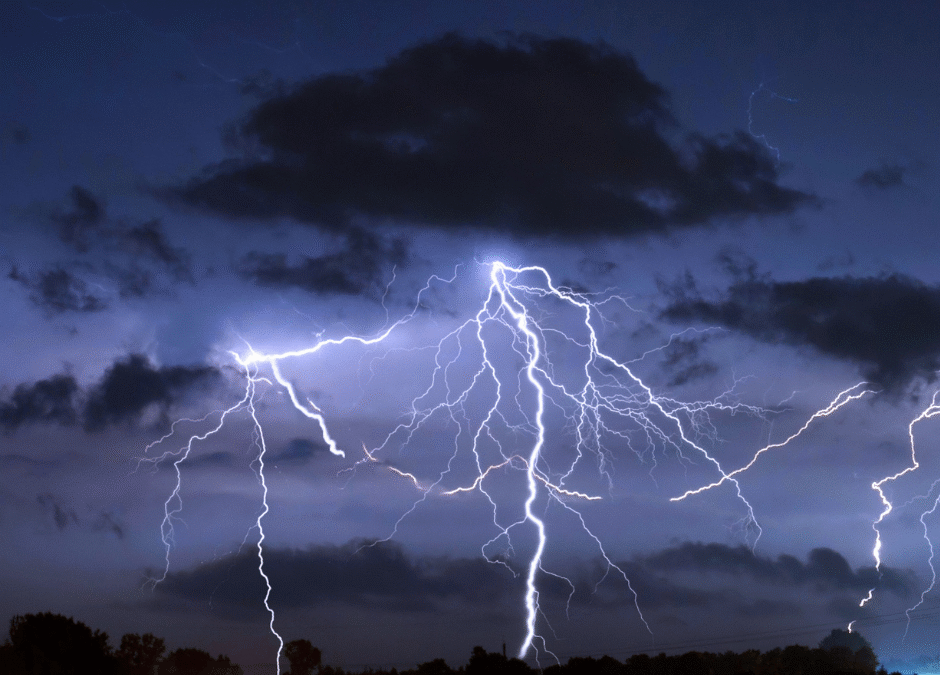Every May, the weather apps in Moses Lake light up with thunderstorm alerts, wind advisories, and the occasional “possible lightning” push notification that makes you glance at your flat‑screen and wonder, Is my TV safe? Grant County’s spring storm season is no joke—its mix of fast‑moving cold fronts, sudden downpours, and gusts that rattle overhead lines can fry electronics and knock out power in the blink of an eye.
As the leading electricians at Home Electrical Services, we field the same frantic calls year after year: dead refrigerators, tripped breakers that won’t reset, and laptops that suddenly refuse to boot. Nearly every case traces back to two preventable issues:
- Power surges that sneak through unprotected wiring
- Backup power plans that were never tested—or never existed
This guide puts an end to the guesswork. You’ll learn:
Why Grant County’s spring weather is surge season
- The science behind whole‑house surge protectors (and why strips aren’t enough)
- How to prep portable or standby generators with safe interlocks
- A step‑by‑step May maintenance checklist used by our certified electricians
- Money‑saving rebates, insurance tips, and when to schedule your surge‑protection inspection
Ready to storm‑proof your place? Let’s flip the breaker on electrical uncertainty and keep your lights—and your life—running smoothly.
-
Why May Storms Put Your Wiring at Risk
Rapid temperature swings = voltage swings
May in Grant County lives at meteorological extremes: frosty mornings in the low 40s give way to 70‑degree afternoons in a single day. Those pressure changes fuel sudden thunderstorms. Each bolt of lightning carries up to one billion volts, creating electromagnetic pulses that surge along power lines and, ultimately, into your breaker panel.
Overhead lines act like lightning antennas
Most neighborhoods outside downtown Moses Lake still rely on overhead distribution. When branches whip into lines or transformers take a hit, the voltage spike roars down the path of least resistance—often the service entrance to your home or business.
Grid hiccups travel miles
Even if lightning strikes ten blocks away, the shockwave can ripple through the utility grid, causing micro‑surges you can’t see or hear. Sensitive electronics (LED TVs, gaming consoles, smart thermostats) feel every jolt.
**Bottom line:** If your breaker panel lacks modern surge protection, May is open season on your appliances.
-
Power Surges 101: What They Are and How They Destroy
A surge is any transient over‑voltage event lasting 1–30 microseconds. That sounds insignificant—until you realize a single impulse can reach 6,000 volts. Internal surges (motors cycling in fridges or AC units) are common, but *external* surges from weather and grid switching do the real damage.
The silent killer of circuitry
Circuit boards contain microscopic pathways of copper. Think of them as electrical capillaries. A 6,000‑volt spike is like a fire hose slamming into those capillaries—traces vaporize, solder joints crack, and semiconductors melt. You probably won’t notice until next week when your router mysteriously dies.
Insurance rarely covers “wear and tear”
Homeowner policies often exclude gradual electronic degradation. If your laptop works today but quits next month, proving a surge caused it is nearly impossible. Prevention is cheaper than arguing with adjusters.
-
Whole‑House Surge Protection vs. Plug‑In Strips
Power strips: the false sense of security
Cheap strips advertise “surge suppression,” but their tiny MOV (metal‑oxide varistor) components sacrifice themselves after just one or two spikes. They also protect only what’s plugged into them—leaving HVAC systems, well pumps, smart fridges, and security panels exposed.
Whole‑house surge protectors: panel‑level guardians
A whole‑house unit installs directly on your main service panel, clamping excess voltage to ground before it fans out across branch circuits. Modern models:
- React in under one nanosecond
- Handle 40,000–80,000 amperes
- Feature LED status indicators and replaceable modules
Our electricians recommend a Tier 1 protector at the meter and a Tier 2 device on the breaker panel for layered defense.
-
Generator Preparedness: Because Outages Last Longer Than One Flashlight Battery
Pick your backup style
- Portable generator + interlock kit – Budget‑friendly and flexible, but you’ll need to wheel it out, fuel it, and flip the interlock every outage.
- Standby generator + automatic transfer switch – Seamless, permanent solution that starts within seconds of a blackout and can power the whole home.
Follow the “20‑20‑20” rule for portable units
- Run 20 minutes every month
- Keep at least 20 gallons of fresh, treated fuel
- Change oil every 20 hours of runtime (or as manual dictates)
Interlock and transfer switch safety
Never back‑feed a generator through a dryer outlet (yes, people still try). An interlock or ATS isolates your home from the utility grid, protecting linemen and preventing fires. Our licensed team installs code‑compliant switching systems every week—ask for a quote before May’s first thunder rolls.
-
Service Panel Health Check: The Foundation of Surge Safety
If your panel is older than 25 years or shows any of these signs, schedule an inspection:
- Warm or buzzing breakers
- Double‑tapped (two wires on one breaker) circuits
- Fuse box instead of breakers
- No main disconnect
Replacing a fatigued panel often costs less than replacing a fried entertainment center—and sets the stage for proper surge protectors and generator hookups.
-
The Electrician’s May Maintenance Checklist
Borrow our blueprint (used on hundreds of local jobs) to safeguard your property before peak storm season:
- Test GFCI & AFCI outlets – Press the “test” button, confirm power cuts, then “reset.”
- Inspect exterior service mast – Look for loose weatherhead, cracked conduit, or squirrel damage.
- Verify grounding electrode – Ensure grounding rod clamp is tight and wire isn’t corroded.
- Install or inspect whole‑house surge protector – Check LED status; replace modules if blinking.
- Label critical circuits – Refrigerator, well pump, Wi‑Fi, medical devices; simplifies generator load management.
- Clean generator carburetor – Old gas gums jets; add stabilizer or run ethanol‑free fuel.
- Test interlock/transfer switch – Kill utility power at the main, start generator, verify selected circuits energize.
- Update homeowners insurance – Ask about discounts for surge protection and permanently installed standby generators.
- Create outage kit – Flashlights, radio, battery packs, bottled water, and printed contact information for Home Electrical Services.
- Schedule professional inspection – DIY eyes miss hazards; a licensed electrician spots hidden heat damage with thermal imaging.
-
Real‑World Example: The $7,300 Surge
Last May, the Walters family in rural Grant County thought they were protected by a $20 surge strip. A single lightning strike in the Columbia Basin sent voltage spikes through their cable line and service entrance simultaneously:
- 65‑inch OLED TV: $2,100
- HVAC control board: $900
- Refrigerator motherboard: $450
- Gaming PC: $1,800
- Lost freezer contents: $300
- Warranty deductibles & service calls: $1,400
Total: $7,300—not including stress. After installation of a dual‑tier surge system and a 14 kW standby generator, their next outage lasted four hours, but their Netflix marathon never skipped a beat.
-
Rebates, Tax Incentives, and Insurance Breaks
Utility rebates
Grant County PUD occasionally offers $50–$200 rebates on qualifying whole‑house surge protectors. Check the latest forms or let us handle paperwork during installation.
Federal tax credits
Under the Energy Efficient Home Improvement Credit (IRC 25C), a portion of standby generator costs may qualify if integrated with renewable systems. Talk to your CPA.
Insurance premium reductions
Some carriers shave 5 % off premiums for homes with professional surge protection and automatic transfer switches. Provide them your installation certificate; we’ll supply it same‑day.
-
When to Call the Pros
Reach out if any of these sound familiar:
- Frequent breaker trips during storms
- You rely on medical equipment or remote work and can’t afford downtime
- You’re unsure which generator size meets your load
- You want one contractor who handles surge protectors, panel upgrades, and generator wiring without subcontracting chaos
Our licensed, bonded, and insured team services the entire Columbia Basin—Moses Lake, Ephrata, Quincy, and beyond. Book your free storm‑proof assessment here (https://homeelectrical.net/contact) or call the number at the top of any page.
-
What’s Next? Continue Your May–June Home‑Protection Plan
Surge protection is Part 1 of a complete seasonal strategy. Dive into the rest of our spring‑summer series:
- Ensure cool comfort with our HVAC Tune‑Up Guide for Spokane Homeowners
- Cut cooling bills in June with Energy‑Smart Cooling Upgrades in Wenatchee
- Boost curb appeal after dark by reading Outdoor Lighting Upgrades for Ephrata
Bookmark those pages, share them with neighbors, and circle back—new posts go live twice a month.
Final Thoughts: Turn Spring Storms Into a Non‑Event
Grant County’s weather will never get an “Easy” setting, but your electrical system can. Whole‑house surge protection rejects dangerous voltage at the door, while a properly wired generator turns blackouts into a mere flicker. Together, they protect your tech, your pantry, and your peace of mind.
If you take only one action today, make it this: schedule a professional inspection. Our Moses Lake electricians arrive on time, explain every step, and quote upfront—no mystery charges.
Storm season is here. Let’s make sure you’re ready for every lightning strike, wind gust, and grid glitch Mother Nature sends our way. Head back to Home Electrical Services for more expert tips, and stay tuned for our upcoming June posts that keep your home cool, bright, and efficient all summer long.








